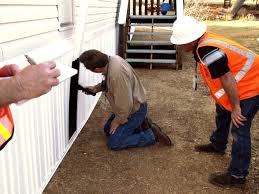
A house inspection is a crucial step when buying or selling a property. It’s a thorough assessment of a house’s condition, identifying potential issues and ensuring transparency for both buyers and sellers. This guide will outline what to expect during a comprehensive house inspection, helping you understand the process better.
Preparing for the Inspection
Scheduling and Preparation: When scheduling an inspection, it’s crucial to hire a qualified and reputable home inspector. Research and select an inspector known for their meticulousness and attention to detail. Before the inspection day, ensure that the inspector has easy access to all areas of the property. Clearing away clutter, unlocking gates, and providing access to spaces like attics, crawl spaces, and utility areas allows the inspector to conduct a comprehensive assessment.
Before the Inspection: Sellers should be transparent about any known issues or past repairs with the property. Disclosing these details to the inspector beforehand helps in focusing on potential problem areas. On the other hand, buyers typically sign an agreement with the inspector detailing the extent of the inspection, ensuring clarity on what will be assessed.
The Inspection Process
Exterior Inspection: The inspection usually starts with an evaluation of the property’s exterior. Inspectors closely examine the roof for any signs of damage, such as missing shingles or leaks. They also inspect gutters, downspouts, and chimneys for proper functionality. Additionally, inspectors assess the foundation, siding, windows, and exterior structures for any structural issues, water damage, or signs of wear and tear.
Interior Inspection: Moving inside, inspectors focus on various internal components of the house. They check the electrical systems for safety and functionality, ensuring that outlets, switches, and wiring meet safety standards. Plumbing fixtures, pipes, and the HVAC (heating, ventilation, and air conditioning) system are inspected to ensure they are working properly and free from leaks or other issues.
Identifying Potential Issues
Notable Findings and Defects: During the inspection, the inspector identifies notable issues and defects within the property. These can range from safety hazards like faulty wiring or structural problems to minor defects such as cosmetic imperfections or worn-out components. The inspection report highlights these findings in detail.
Reporting and Documentation: Following the inspection, the inspector compiles a comprehensive report detailing their observations. This report includes descriptions of identified issues, accompanied by photographs to provide visual evidence. Moreover, the report categorizes the issues based on their severity, helping buyers and sellers prioritize necessary repairs or negotiations.
Post-Inspection Steps
Reviewing Inspection Findings: Upon receiving the inspection report, both buyers and sellers review the findings. Based on the report, buyers may negotiate with sellers for repairs or adjustments in the sale price. Sellers, in turn, might decide to address the identified issues themselves or provide credits to cover repair costs.
Taking Action: After negotiations, necessary actions should be taken promptly. This may involve carrying out agreed-upon repairs, renegotiating terms based on the inspection findings, or conducting a re-inspection to ensure the completion of agreed repairs and satisfactory resolution of issues.
Conclusion:
An extensive home inspection is a crucial step in the real estate process since it offers priceless information about the state of the property. Both buyers and sellers in real estate transactions benefit from transparent and well-informed decision-making processes, which are facilitated by thoroughly understanding each phase of the inspection process, carefully examining the findings, and taking the appropriate action after the inspection.

